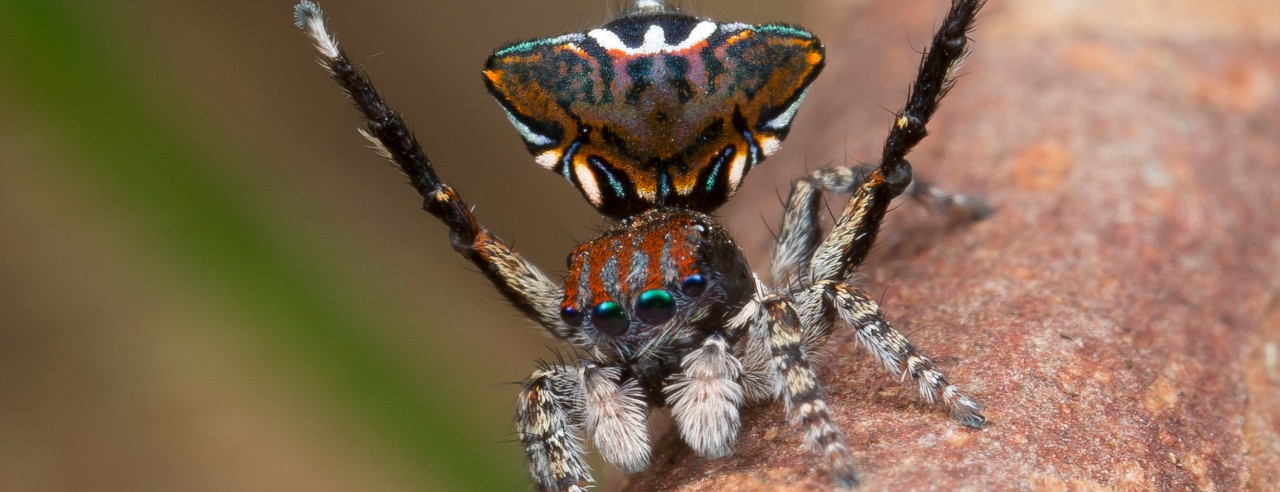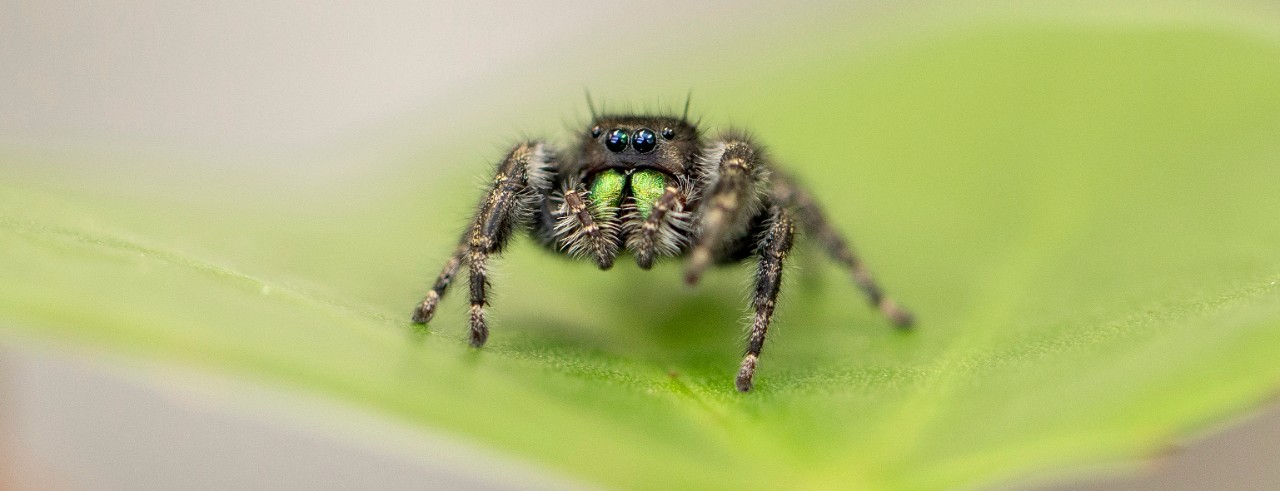
LiveScience: UC research shows spider butts look like faces
The spider's abdomen looks like a wasp's or mantis' head. Researchers say it fools computers, too.
LiveScience examined University of Cincinnati biology research into why some jumping spiders use biomimicry in mating dances.
UC biology student Olivia Harris observed that the raised abdomens of peacock jumping spiders during their courting dance looked to her like the angular head and eyes of predators that eat spiders — wasps and preying mantises.
But to determine if what she was seeing was just her imagination, she enlisted the help of artificial intelligence to see if it was fooled, too.
She used images of peacock jumping spiders taken by internationally renowned photographer and Australian scientist Jurgen Otto, whose stunning photos and videos of the colorful spiders have appeared in National Geographic and Smithsonian.

A jumping spider in UC professor Nathan Morehouse's lab. Photo/Joseph Fuqua II/UC Creative Services
Harris asked artificial intelligence to tell the spiders apart from images of preying mantises, wasps and other insects. The spider abdomens fooled the computer about 5 percent of the time.
"One of the species is actually named Maratus vespa," she said. "Vespa is Latin for wasp. So we're not the first scientists to see the faces of invertebrate predators in these little spiders."
Spiders are notoriously cannibalistic. Courting males walk a fine line between seducing females and ending up as a snack.
Harris said mimicking a predator might give females just enough pause to halt a deadly ambush so the male can begin his courting display.
"Our hypothesis is the males are trying to exploit the females' anti-predator response of freezing when scared. This would help him capture the female's attention without immediately becoming prey himself," Harris said.
Harris presented her findings at the Society of Integrative and Comparative Biology conference this month.
Featured image at top: A jumping spider's raised abdomen looks so much like the angular head of a preying mantis or wasp that it fooled a computer some of the time. Photo/Jurgen Otto/www.peacockspider.org
Next Lives Here
The University of Cincinnati is classified as a Research 1 institution by the Carnegie Commission and is ranked in the National Science Foundation's Top-35 public research universities. UC's graduate students and faculty investigate problems and innovate solutions with real-world impact. Next Lives Here.
Become a Bearcat
- Apply online or get more information about undergraduate enrollment by calling 513-556-1100.
- Learn more about UC's many undergraduate and graduate programs.
Related Stories
Two College Credit Plus high school students receive bachelor’s...
May 4, 2025
Two high school students received bachelor's degrees at the University of Cincinnati's Spring Commencement. Caden Elrod, a senior at Walnut Hills High School in Cincinnati, and Sai Gollamudi, a senior at Centerville High School in Centerville, receive their degrees while also completing their diplomas. They are first high school students in UC's College Credit Plus Program to earn bachelor's degrees.
UC students recognized for achievement in real-world learning
May 1, 2025
Three undergraduate University of Cincinnati Arts and Sciences students are honored for outstanding achievement in cooperative education at the close of the 2024-2025 school year.
UC students recognized for achievement in undergraduate research
April 30, 2025
The University of Cincinnati recognizes undergraduate student researchers for outstanding achievement in the sciences and humanities.
